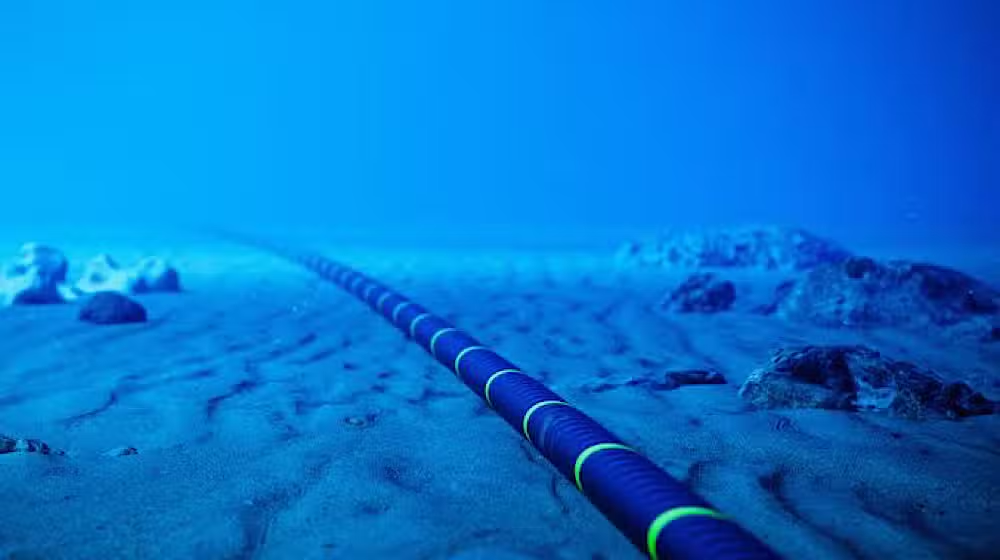The government has announced ambitious plans to strengthen Pakistan digital infrastructure by setting up new landing stations for submarine cables, expanding fiber connectivity, and encouraging foreign investment. At present, all seven of Pakistan’s submarine cables land in Karachi, but officials confirmed that discussions are underway to establish alternative landing stations in Gwadar or other coastal cities. This diversification will not only reduce dependency on Karachi but also enhance redundancy and resilience in the country’s internet backbone.
New Submarine Cable Landing Stations
The expansion of Pakistan digital infrastructure hinges on diversifying submarine cable routes. Currently, Karachi serves as the single hub for international connectivity, making it vulnerable to outages. With three new submarine cables expected soon, the government is exploring Gwadar and other coastal locations as alternative landing sites. This move is designed to strengthen internet reliability, attract global tech firms, and support Pakistan’s rapidly growing digital economy.
IT Exports and Freelancing Growth
Federal Minister for IT and Telecommunication, Shaza Fatima, highlighted that Pakistan’s IT exports officially stand at $3.8 billion, though actual earnings are estimated to be nearly double. Freelancers form a major portion of this export sector, underlining their role as key drivers of Pakistan digital infrastructure growth. To build on this momentum, the government has set up the Pakistan Digital Authority and launched initiatives under the Digital Nation Pakistan program.
One of the most impactful programs is DigiSkills, through which 300,000 people have already been trained in freelancing and digital skills, with another 300,000 currently in training. In collaboration with companies such as Huawei and Google, Pakistan aims to train one million individuals in digital skills over the coming years. “Our vision is that every child in Pakistan should have access to high-speed internet. In three to four years, we will be a digitally transformed country, Insha’Allah,” said the Minister.
Fiberization: The Backbone of Digital Growth
While mobile broadband currently serves 98% of Pakistan’s internet users, only 2% have access to fiber. Strengthening Pakistan digital infrastructure requires rapid fiberization, as international benchmarks show that over 50% of telecom towers in the region are connected through fiber, compared to just 14% in Pakistan.
Recognizing this gap, the government has set a target to raise fiberization levels to 40–60% in the next few years. However, high Right of Way (RoW) charges and lengthy approval processes have slowed progress. To address these challenges, the Capital Development Authority (CDA) recently abolished RoW fees, while the Prime Minister’s Office instructed the National Highway Authority and Pakistan Railways to waive charges to accelerate fiber deployment. A fast-track approval portal has also been launched to simplify procedures.
Satellite Internet and New Connectivity Options
Another important step in expanding Pakistan digital infrastructure is the development of satellite internet services. Multiple agencies, including the Pakistan Telecommunication Authority (PTA) and the Pakistan Space Activity Regulatory Board, are working on regulatory frameworks to allow international providers to operate in the country. Consultants are streamlining the licensing process, with finalized regulations expected soon.
So far, several companies from the US, China, and other countries have submitted applications to provide satellite internet in Pakistan. This would diversify connectivity options, particularly for rural and remote areas where fiber deployment is difficult.
Encouraging Private Sector Investment
The government is also prioritizing investment-friendly policies to boost Pakistan digital infrastructure. By eliminating regulatory bottlenecks, reducing costs for fiberization, and supporting submarine cable expansion, officials hope to attract both local and foreign companies to invest in connectivity projects. According to the IT Ministry, this will not only improve service quality but also reduce costs for consumers and businesses.
Pakistan’s push to become a regional digital hub is also closely linked to the rising demand for data centers, cloud services, and e-commerce. With digital transformation gaining pace, international firms are more likely to invest in Pakistan if its infrastructure offers stability and redundancy.
Toward a Digitally Transformed Pakistan
The expansion of Pakistan digital infrastructure is not just about faster internet speeds — it is about transforming the economy. By supporting freelancers, boosting IT exports, and creating robust digital connectivity, Pakistan is laying the groundwork for long-term growth. According to official figures, IT exports already make up a growing share of the economy, and with proper infrastructure in place, this sector could easily double within the next five years.
Government initiatives such as DigiSkills and partnerships with global tech companies demonstrate a clear commitment to digital inclusion. Training one million people in advanced digital skills will ensure that the workforce is ready to compete globally.
The strengthening of Pakistan digital infrastructure through submarine cables, fiberization, and satellite internet will play a critical role in shaping the country’s economic future. By addressing long-standing policy challenges, attracting private investment, and equipping its youth with digital skills, Pakistan is on the path to becoming a competitive player in the global digital economy.
If these efforts continue with consistency and vision, Pakistan could not only bridge its digital divide but also emerge as a leading technology hub in South Asia.



